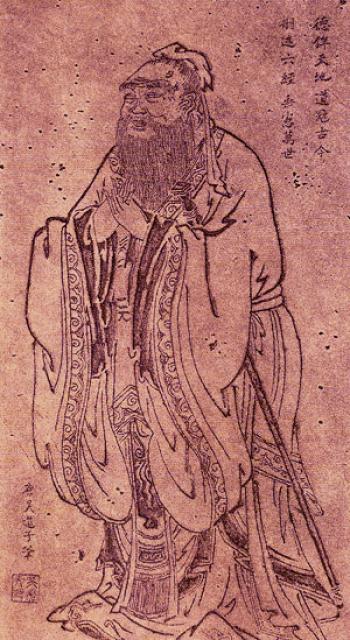By Alan Roberts

Former flag of the communist part of China (via Wikipedia)
Despite a growing tolerance for socialism, “communism” is still a dirty word for most Americans. Many point to Stalin’s Gulag, the Killing Fields of the Khmer Rouge, and the repressive Kim dynasty in Korea as they preface the question how could communism ever appeal to anyone? For each country, there are myriad answers to that question, but it is useful to consider the historical situation in each nation before they embraced communism.
In China, for instance, there were political, economic, and nationalistic reasons for the popularity of communism, but interestingly, Chairman Mao Zedong’s movement found broad popular support in part because of his explicit efforts to enforce gender equality. It was he, after all, who proclaimed that “women hold up half the sky.”[1] Compared with China’s Confucian patriarchal system that had oppressed women for so long, many saw this as a welcome change. Nevertheless, part of what makes patriarchy so insidious is its ability to trick whole generations of people—including women—into propagating an oppressive system rather than overthrowing it.
Judith Bennett’s History Matters analyzes patriarchy in a medieval European context, but her theoretical claims could also be applied to pre-communist Chinese society in general, and Confucianism in particular. Bennett points out that it is problematic to broadly assume that men alone are the perpetrators of patriarchy and that women are their passive victims. While the institution of patriarchy certainly privileges the masculine over the feminine, Bennett also states that patriarchy has harmed individual men just as it has benefitted individual women. Indeed, certain women have not only benefited from it, but have also served as active “agents of patriarchy.”[2]

Portrait of Confucius, painted by Wu Daozi, 685-7 58 (via Wikipedia)
Confucius lived circa 500 BCE, but it was not until the Han Dynasty (206 BCE to 220 CE) that Confucianism became the official state ideology. Since then, Confucianism was not simply a “main character” in Chinese society but also the stage, set, and scenery upon which the play of Chinese daily life unfolded. Central to Confucian philosophy is the doctrine of filial piety. This principle teaches that universal harmony is maintained when everyone shows proper respect to their elders because the organization of the family is a microcosm patterned after the organization of the state. A filial son honors his father, but filial piety also articulates the rules of conduct between friends, elder and younger brothers, husbands and wives, subjects and emperors. In this way, society is hierarchically structured with men ruling over women and the old ruling over the young, all the way from the lowliest peasant granddaughter to the imperial Son of Heaven.
At the apex of the Confucian philosophical pantheon sits Confucius, Mencius, and Xunzi. Writing almost four-hundred years after the fact, the Han dynasty scholar Liu Xiang (79-8 BCE) compiled a biography of 125 women who each exemplified Han feminine virtues. One of these women was the mother of Mencius, who, according to Liu, taught her son that a woman’s duties are to cook the five grains, heat the wine, look after her parents-in-law, make clothes, and that is all! This means that a woman’s duty is not to control or to take charge. Instead she must follow the ‘three submissions.’ When she is young, she must submit to her parents. After her marriage, she must submit to her husband. When she is widowed, she must submit to her son. These are the rules of propriety.[3]
It is worth pointing out that although this quote is attributed to the mother of Mencius, it was actually written centuries later by a man whose intention was to reinforce the patriarchal order by projecting stereotypical female attitudes into the mouth of an authoritative woman whose own gravitas is enhanced by the respected tradition surrounding her son. However, Liu Xiang laid the foundation for others to buttress the Confucian patriarchy.
Almost a hundred years after Liu Xiang, Ban Zhao, China’s first female historian, wrote a book titled Admonitions for Women. Her work condemns spousal abuse, but this text would certainly qualify Ban Zhao as one of Bennett’s “agents of patriarchy”:
On the third day after the birth of a girl…lay the baby below the bed [to] plainly indicate that she [is] lowly and humble and should regard it as a prime duty to submit to others…give her a spindle with which to play [signifying] that she should accustom herself to labor and consider it a prime duty to be industrious. Let a woman modestly yield to others; let her put others first, herself last. Should she do something good, let her not mention it; should she do something bad, let her not deny it. Let her bear contempt; let her even endure when others speak or do evil to her. Always let her seem to tremble and to fear.[4]
A thousand years later, Confucian patriarchy would intersect gender and class by adding foot binding to its repertoire of female suppression. While women of the upper class suffered the debilitating pain and immobility of having bound feet, women of the lower classes without bound feet suffered socially from diminished marriage prospects and public humiliation. However, prior to the collapse of the Qing dynasty in 1911, bowing to society’s unrealistic beauty standards, all classes of Chinese women were binding their feet. Roughly half of all Chinese women had bound feet, although the percentage rose significantly among the upper classes. Although many Chinese emperors and administrators tried to outlaw the practice, only the communists were successful at doing so because of their superior organizational tactics and relentless campaigning.[5]
In 1907, an expatriated Chinese woman named He Zhen published a series of articles on feminism and equal rights. Although she preceded the Chinese Communist Party by over a decade, and although she was not widely read by the Chinese public, her essays did influence a number of important social agitators whose movements helped bring the Communist Party to power. She begins her essay, “Women’s Revenge,” by outlining the patriarchal injustices that Chinese women have suffered. She then asks “how did this poison fill the entire world? It can be traced to the doctrines of Ban Zhao.” She continues by labelling Ban a traitor to her sex, a dupe of Confucian misogyny, and a willing agent of patriarchy.[6] He’s intention, however, is not simply to lay the axe at the root of patriarchal Confucianism, but to actively promote communism as the treatment for China’s nineteenth and twentieth century social ills.
In another essay, He declares that starvation is the strongest tool of sexual oppression in Chinese society. By controlling the food (i.e. the products of labor), men control the labor of women. He argues that just so they can eat, women generally fall into one of three categories: either they are slaves to their husbands; they work in factories for slave wages; or else they become prostitutes and enslave themselves to their pimps. He proclaims that the problem for Confucian women is that they are dependent on others, and “as long as you depend on others, you cannot be free. I have a good idea that will exempt you from relying on others while still finding food naturally. How? By practicing communism.” Whether or not a twenty-first century Westerner agrees with He’s assessment, it should at least be understandable why so many oppressed Chinese women agreed with Mao and He that because women hold up half the sky, “if we only unite together, with [communism] we can naturally have a good future. As we say colloquially, ‘the good times are coming.’”[7]
(Alan Roberts is an alumnus of the Defense Language Institute’s Chinese language program. He is currently a graduate student in history at Utah State University where he is writing his Master’s thesis on performative elements of gender in Chinese Communist propaganda.)
[1] https://www.nytimes.com/2012/03/07/world/asia/holding-up-half-the-sky.html?_r=0
[2] Judith Bennett, History Matters: Patriarchy and the Challenge of Feminism (Philadelphia: University of Pennsylvania Press, 2007), 59.
[3] Xiang Liu, “Women’s Virtues and Vices,” in Chinese Civilization: A Sourcebook, 2nd Ed, ed. Patricia Buckley Ebrey (New York: The Free Press, 1981, 1993), 73.
[4] Zhao Ban, “Admonitions for Women,” in Sources of Chinese Tradition Volume 1, ed. Wm. Theodore De Bary and Irene Bloom (New York: Columbia University Press, 1999), 821, 822.
[5] Louisa Lim, “Painful Memories for China’s Footbinding Survivors,” National Public Radio, March 19, 2007, accessed May 2, 2018, https://www.npr.org/templates/story/story.php?storyId=8966942.
[6] Zhen He, “Women’s Revenge,” in Sources of Chinese Tradition Volume 2, ed. Wm. Theodore De Bary and Richard Lufrano (New York: Columbia University Press, 2000), 394.
[7] Zhen He, “What Women Should Know About Communism,” in Sources of Chinese Tradition Volume 2, ed. Wm. Theodore De Bary and Richard Lufrano (New York: Columbia University Press, 2000), 390-2.




